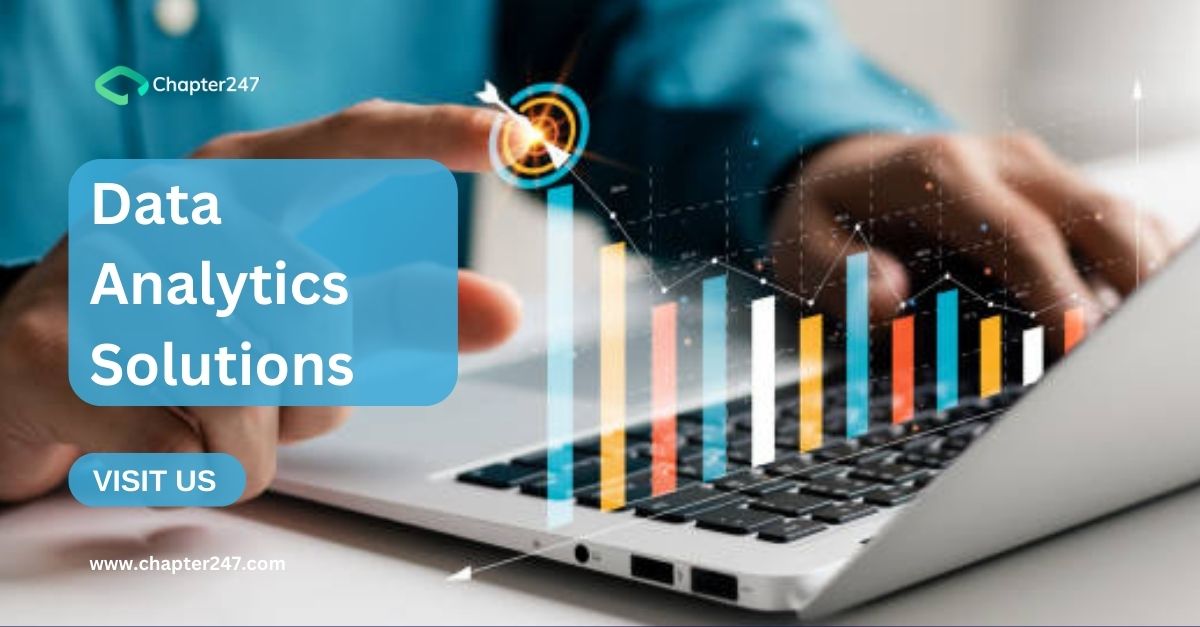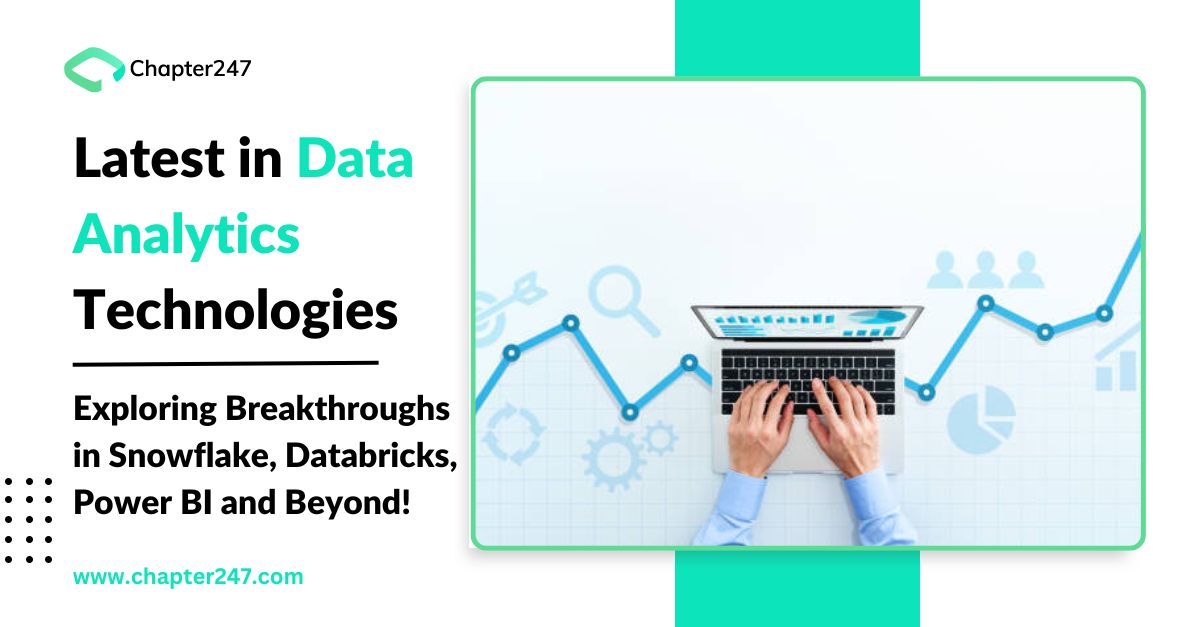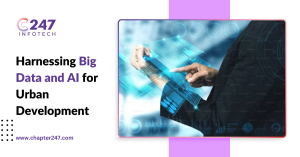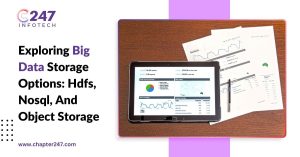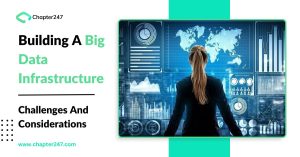The world as we know it is data-driven. Every conversation, task, and click constitutes a row of data to be fed to organizations and utilized for different purposes. As companies have a pile of information to mine, the question is how to use this for the enterprise’s aims. Data analytics is a key factor here. Search engines collect and analyze user information. Data analytics tools allow businesses to convert this raw data into helpful information, thus giving them an edge over their market rivals.
This article explores the latest advancements in the most popular data analytics technologies: Snowflake, Databricks, Power BI, and similar technologies. We shall go in-depth into the unique suits of the task and discover the thrilling breakthroughs of future data analysis.
Demystifying the Data Deluge: Snowflake
In the past, data storage and management of huge volumes was an obstacle and too expensive. Enter the cloud. Cloud-based data warehouses, like Snowflake, revolutionized data storage through their scalability, flexibility, and cost efficiency.
The ArchThe Architectureflake, separate and distributed storage resources, is its uncovered part. They can scale the storage without biglining the computing power and opt for a more cost-efficient solution. In addition, the pay-as-you-go pricing offered through Snowflake doesn’t need upfront capital investment, hence appealing to small and big businesses.
Gartner predicts that digital workloads, which stood at 30% in 2021, will be implemented on cloud-native platforms, remarkably increasing to over 95% by 2025. It notably emphasizes the higher number of cloud-based solutions, backed by their enormous capacity to manage the rate at which data volume, variety, and velocity are growing.
Unleashing the Power of Unified Data Platforms: Databricks
Data analytics no longer only covers storing data; it is also about drawing knowledge. Databricks, a unified data platform that leverages Apache Spark, presents a superb environment for data engineering, data science, and machine learning.
One more attractive Databricks feature is that it perfectly works with any cloud platform you might be using. This makes it your only service solution for data analytics. Users can use Databricks for automated data pipelines, model deployment, and immediate analytics from different data sources.
In addition, Databricks brings teams of data scientists, engineers, and business analysts together by providing a common place for investigation and analysis. Databricks’s study demonstrated that organizations that used it had 5x faster data processing. By improving dramatically the level of efficiency, businesses are enabled to make decisions based on data even faster.
Simplifying Data Visualization: Power BI
Data is indeed robust, but it can also be overburdening and challenging. Tools such as Power BI serve the purpose of transforming complex datasets into simple visuals. Power BI is a BI (Business Intelligence) platform that allows the creation of visualizations and reports quickly. Such practice opens up data analysis to everyone in the organization, regardless of their technical skills.
The power of a dedicated purpose underpins a company’s stead company’s perseverance and keeps moving in the right direction, even in times of testing difficulty. Furthermore, Power BI libraries have arrays of ready-made connectors to various data sources, so they fasten connections to and draw patterns from many platforms.
As of the 27th of April 2023, Microsoft Power BI is proud of its over 115 million users in its nameplate. In 2024, it is forecast that the worldwide user base will reach 68,609, and 24,450 users will be in the US. Power BI also enjoys 97 % penetration among the Fortune 500 leading businesses. This universal acceptance tells of the expanding market for BI tools that enable data democratization and ensure that everyone uses data for purposes they identify with.
Beyond the Big Three: Emerging Technologies
Snowflake, Databricks, and Power BI are the leading companies in the data analytics space, but again, other emerging technologies are also making noise. Programs like Apache Kafka, Debt (a building data tool), and Tableau are gaining a lot of popularity for their unique functions.
- Apache Kafka is a streaming platform supported by distributed technology and is ideal for real-time data processing. It is adopted by 80% of Fortune 100 companies. Kafka’s features include large quantities of data processing with slight delays, which makes it suitable for analyzing any app that needs an instant reaction.
- dbt is the stand-alone technology based on the stripped-down data transformation process. It enables data analysts and engineers to transform data via SQL, thus decreasing the efforts to build and support complicated pipelines. dbt Community is a rapid weight gainer with over ten thousand active users and contributors.
- Tableau, a software company offering data visualization tools, is still reinventing itself. In 2023, it released AI-infused wizards for the visual emanation process that increases the level of simplification. Tableau’s simplicity of use and tightening of data sources with various data sources make it a great gadget among data analysts.
Automating Analytics: ML on the Up
Machine learning (ML) has gained a vast territory in data analytics. ML algorithms allow routine struggles to be removed, hitherto unknown patterns to be detected, and predictive signals that would otherwise be beyond ordinary methods are sent out.
Data analytics platforms like Databricks and Snowflake have embedded machine-learning functionalities. For instance, Databricks provides AutoML tools that help users build and deploy machine learning models with minimal or no coding expertise.
Furthermore, Snowflake applies well to different machine learning services, through which users can strictly apply ML within the data warehouse system. From IDC, a recent study predicts that the machine learning market to rise globally to $20.4 billion by 2024 will account for. This showcases the ongoing acceleration that occurs in ML when utilizing it to automate and support analysis duties.
Beyond the Horizon: The Future of Data Analytics
The future of data analytics is flashed with endless possibilities; it will reform industries and decision-making systems. Here are a few key trends to watch:
- Natural Language Processing (NLP): Upcoming NLP technologies will permit people to engage with the data using natural languages and make the data analysis much easier to understand. According to the Worldwide NLP Market Forecast for 2025, this market is supposed to be worth $43. The figure is USD 3 billion, corresponding to a CAGR (Compound Annual Growth Rate) of 21. 5%. This is a sign of growing NLP use in extracting insights from large data sets without hard work.
- Real-time Analytics: The analysis functionality applied while the data is produced will become a more and more significant factor. Unsurprisingly, real-time analytics is projected to emerge as a $13 billion global market. According to the current data, estimates are made to increase the number of inhabitants – it has surpassed 7 billion in 2021 and up to almost $50.1 billion by 2026. Thereby taking advantage of real-time decisions and slackening the time needed to market crisp to correspond to market trends and conditions changes. With the quick response to any incoming data, a more agile approach in strategy-making becomes inevitable.
- Edge Analytics: Data becomes a matter that needs to be processed at the source efficiently and closer to where the data has been generated, mainly for applications with latency constraints. The edge analytics market is anticipated to grow at a CAGR of 24.9% from 2021 to 2026, reaching $15.9 billion. This trend is driven by the requirements of low-power transmission in IoT devices and other applications of low latency, which in turn increases efficiency and reduces the burden from a central server.
These trends imply that the rule becomes easier and quicker to apply data analysis and is merged into business operations to make wiser and even faster decision processes.
Conclusion
The advancements discussed above paint a clear picture: the future of data analytics holds tremendous promise and endless innovation. On the other hand, these fast-changing environments could be complex to deal with. Companies require a strong partner to use such new-age technologies and uncover the real value in their data. This is where Chapter 247 steps in. Chapter 247 creates a complete data analytics platform that implements the latest technologies, including Snowflake, Databricks, and Power BI.
